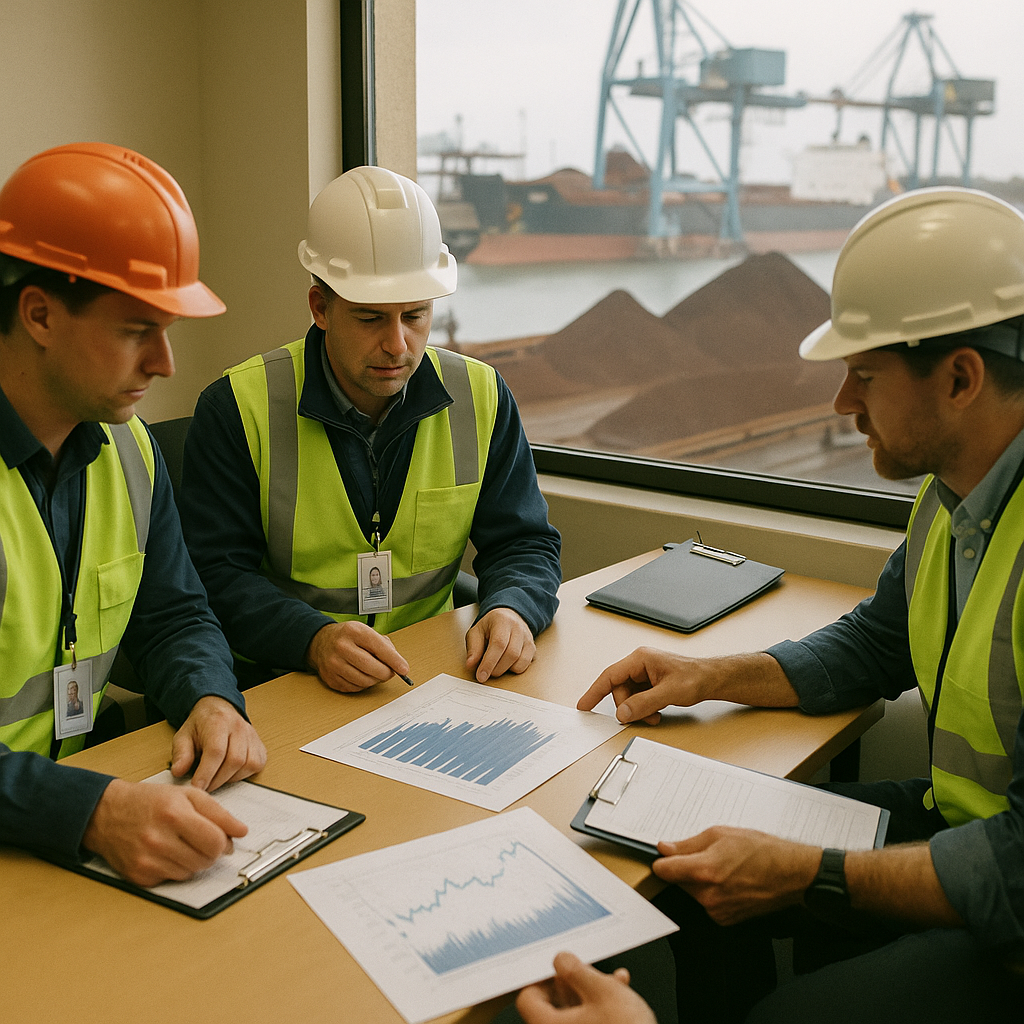
Iron Ore Markets in Flux: MMI Daily Index Report Analysis
In the ever-evolving landscape of global commodities, the iron ore market serves as a crucial barometer for economic health and industrial activity. As of August 22, 2025, the MMI Daily Iron Ore Index Report provides a snapshot of the current state of this vital sector, highlighting significant shifts and underlying trends. This report comes at a time when global supply chains are grappling with post-pandemic adjustments, geopolitical tensions, and regulatory changes, making it imperative for stakeholders to stay informed about the latest developments.
Current Rates and Market Dynamics
According to the MMI Daily Iron Ore Index Report, iron ore prices have experienced a modest uptick, reflecting a complex interplay of supply constraints and demand fluctuations. The report indicates that the benchmark 62% Fe fines are trading at a slightly higher rate compared to the previous week. This increase can be attributed to several factors, including heightened demand from Chinese steel mills, which are ramping up production in anticipation of infrastructure projects and urban development initiatives.
However, the market remains volatile, with prices subject to rapid changes influenced by external factors such as weather disruptions in major mining regions and logistical challenges in transporting raw materials. The iron ore market’s sensitivity to global economic indicators underscores the importance of monitoring these price movements closely.
Fleet Movements and Shipping Trends
The shipping industry, a critical component of the iron ore supply chain, is also experiencing notable shifts. OceanPal Inc., a key player in maritime logistics, has announced a reverse stock split effective August 25, 2025, as reported by Hellenic Shipping News. This strategic move is aimed at consolidating shares and potentially enhancing the company’s market position. Such corporate maneuvers often signal underlying changes in market strategy, possibly in response to fluctuating demand and the need for operational efficiency.
Fleet movements have been influenced by these strategic decisions, with shipping companies recalibrating their routes and capacities to align with current market demands. The ongoing adjustments in fleet deployment highlight the industry’s adaptability in navigating the complexities of global trade.
Geopolitical and Regulatory Influences
Geopolitical tensions continue to cast a shadow over the iron ore market, with potential implications for supply stability and pricing. Recent developments in trade relations between major iron ore producers and consumers have introduced an element of uncertainty. For instance, diplomatic negotiations and trade agreements are being closely watched by market participants, as any disruptions could lead to supply chain bottlenecks and price volatility.
Regulatory changes are also playing a pivotal role in shaping the market landscape. Environmental regulations, particularly those aimed at reducing carbon emissions, are prompting mining companies to adopt more sustainable practices. These regulatory pressures could impact production costs and, subsequently, market prices. Stakeholders are advised to keep abreast of these developments to anticipate potential shifts in the market.
Supply Chain Resilience and Challenges
The resilience of the iron ore supply chain is being tested by various challenges, including labor shortages, transportation bottlenecks, and infrastructure limitations. The MMI report highlights that while demand remains robust, logistical constraints are hindering the smooth flow of goods from mines to ports and ultimately to end-users.
Efforts to enhance supply chain resilience are underway, with companies investing in technology and infrastructure upgrades to mitigate these challenges. The integration of digital tools for real-time tracking and management of shipments is becoming increasingly prevalent, offering a potential solution to some of the current inefficiencies.
Analyst Perspectives and Market Outlook
Market analysts are offering varied perspectives on the future trajectory of the iron ore market. Some analysts maintain a bullish outlook, citing the ongoing demand from emerging economies and the potential for infrastructure-driven growth. They argue that as global economies continue to recover, the demand for steel and, consequently, iron ore will remain strong, supporting price stability or even growth.
Conversely, more cautious analysts point to the potential for a bearish scenario, driven by geopolitical uncertainties and regulatory pressures. They warn that any significant disruptions in trade relations or stringent environmental regulations could dampen market sentiment and lead to price corrections.
Conclusion: Navigating Uncertainty
The current state of the iron ore market, as detailed in the MMI Daily Iron Ore Index Report, presents a mixed picture of opportunities and challenges. In a base scenario, the market is likely to experience moderate growth, supported by steady demand and gradual supply chain improvements. A bullish scenario could see prices rise further, driven by robust infrastructure investments and strong economic recovery. However, a bearish outcome remains possible if geopolitical tensions escalate or regulatory hurdles become more pronounced.
Stakeholders in the iron ore market must remain vigilant, adapting to the dynamic landscape and leveraging strategic insights to navigate the uncertainties ahead. As the global economy continues to evolve, the iron ore market will undoubtedly play a pivotal role in shaping the future of industrial growth and development.
Sources (selection):
